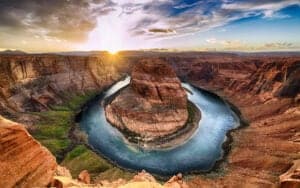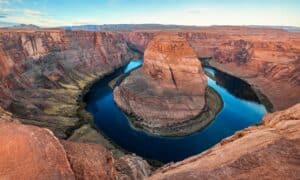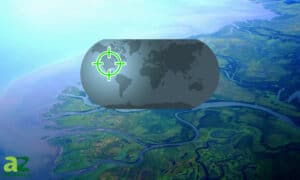Where Does the Nile River Start?
Fresh water supports all kinds of life, especially for the surrounding communities. The Nile River, located on the African continent, has been an essential part of everyday life for thousands of years. It is an important water source for irrigation, transportation, and trade.
The Nile River is a fascinating subject, and there is much to learn about one of the largest rivers in the world. So, where does the Nile River start?
Let’s break down its precise location, including where it starts and ends and the different countries it flows through. To wrap up, you will learn about the importance of this river and the current threats it faces.
Where Does the Nile River Start?
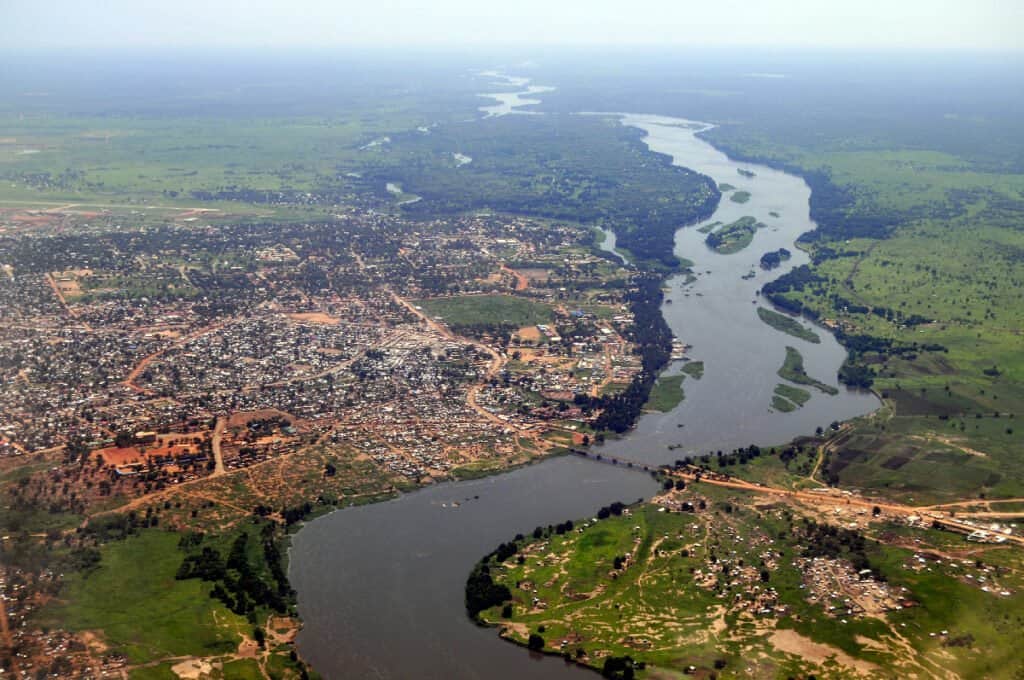
iStock.com/Phototreat
The Nile River starts in the rivers that flow into Lake Victoria in present-day Uganda, Kenya, and Tanzania.
Rivers are highly complex. These flowing bodies of water have multiple confluences, a junction of two rivers. There is often much debate over where rivers begin and end, including the source of a river’s water. People have spent centuries looking for the head of the Nile.
It is generally agreed that the Nile has multiple sources, not just one.
The Nile proper begins on the north shore of Lake Victoria near Jinja, Uganda. However, saying that the Nile starts from this position may not be entirely accurate. The furthest headstream that flows into Lake Victoria is the Kagera River.
The Kagera River, also known as the Alexandra Nile, is the upper headwaters of the Nile and its most distant source. This remote stream rises in Burundi near the northern tip of Lake Tanganyika.
The other primary sources of the Nile River include the Blue Nile, the White Nile, and the Atbarah.
The Blue Nile River originates in Ethiopia at Lake Tana. This tributary supplies 80% of the Nile’s water during the rainy season. The White Nile River is the longest tributary but not the main source. This river is formed near Lake No in South Sudan. The Atbarah River, or the Black Nile, rises in Northwest Ethiopia and connects to the Nile in north-central Sudan.
What Countries Does the Nile River Flow Through?

Feroze Edassery/Shutterstock.com
The Nile runs through or near the border of 11 African countries:
- Egypt
- Tanzania
- Rwanda
- Burundi
- Kenya
- Uganda
- Sudan
- The Democratic Republic of the Congo
- Ethiopia
- South Sudan
- Eritrea
The White Nile flows through Uganda and South Sudan, and the Blue Nile flows through Ethiopia. The two converge in Sudan near Khartoum (Sudanese capital).
Where Does the Nile River End?
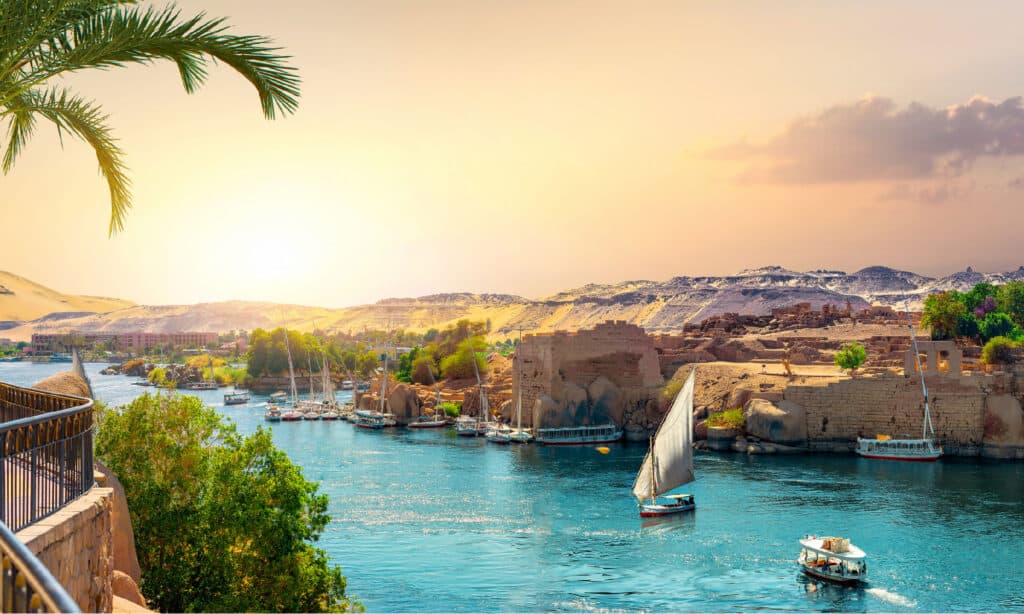
iStock.com/Givaga
The Nile River flows south to north through eastern Africa and empties into the Mediterranean Sea.
Beginning slightly down river from Cairo is the Nile Delta. The Nile Delta is a rich agricultural area near the Mediterranean coastline. Before the Nile empties into the sea, it spreads into many streams. The two main branches that empty into the Mediterranean are the Rosetta branch (to the west) and the Damietta branch (to the east).
The area where the Nile spreads out and drains into the sea is known as the Nile Delta.
The Mediterranean Sea is almost entirely enclosed by land except for a natural link called the Strait of Gibraltar, which connects the Mediterranean to the Atlantic Ocean.
How Long is the Nile River?

iStock.com/HomoCosmicos
The Nile River is 4,132 miles (6,600 kilometers) long. It flows south to north through eastern Africa, cutting through 11 countries before splitting apart and draining into the Mediterranean Sea.
However, considerable debate remains around where to measure the Nile from, with various measures of the Kagera River being possible. Some measurements of the Nile River put it at 4,258 miles (6,853 kilometers) when measuring from further away sources.
Is the Nile River the Longest in the World?
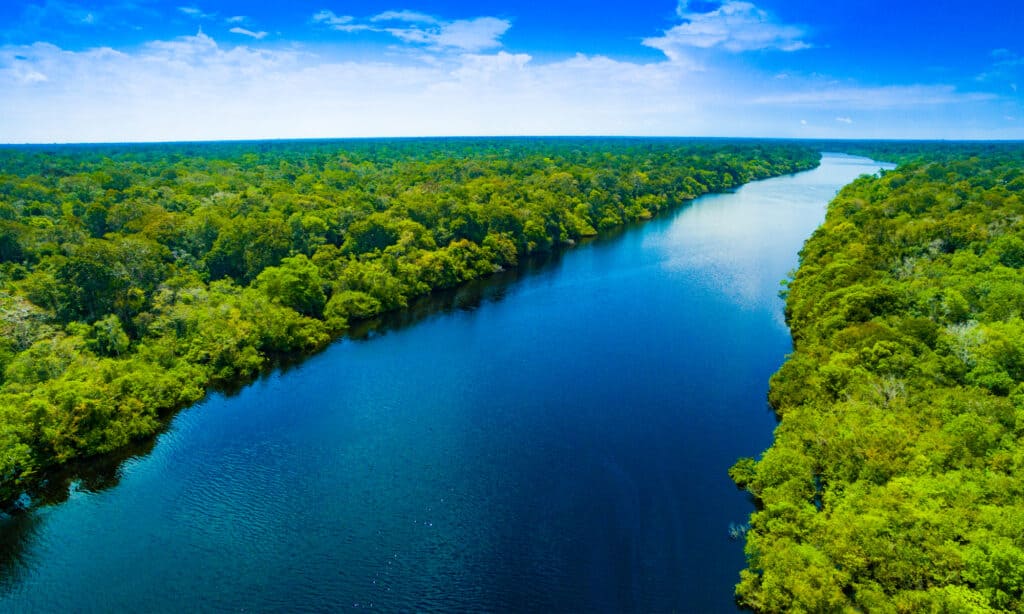
worldclassphoto/Shutterstock.com
The longest river in the world is up for debate.
Until recently, the Nile River was recognized as the longest river in the world. There is quite a bit of speculation over whether the Nile still holds this title.
In 2014, Brazilian scientists recalculated the lengths of the Nile and the Amazon and concluded that the Amazon river measured 4,345 miles, 213 miles longer than widely accepted measurements of the Nile.
Because measuring a river requires much more than a tape measurer, scientists have yet to narrow down the exact source of each major river. The claims in 2014 have since been disputed.
For now, the most accepted answer for the world’s longest river is the Nile. For an extremely detailed analysis of why this debate rages on, watch the video below.
Why is the Nile River Important?
The Nile River creates a fertile valley where civilizations can grow and flourish. Canals bring water from the Nile into cities and farms, supporting agriculture.
The Nile is still heavily used for transportation and trade. Residents of this fertile land utilize speed boats, water taxis, and ferries to avoid the overcrowded streets.
The Nile is an essential part of everyday life for Egyptians and other countries.
What Threatens the Nile River?

Kazzazm/Shutterstock.com
The Aswan High Dam in Egypt was erected to tame the flooding in communities every year. And while the dam is beneficial for hydroelectric power, it is causing other issues.
The silt and sediment necessary for growing crops are getting stuck behind the dam. Soil deposits are essential for the river’s growth; without them, the delta is shrinking due to erosion along the Mediterranean Sea.
Flooding helps the Nile naturally clean itself by flushing out human and agricultural waste. There are much more pollutants with the dam in place.
Another issue facing life around the Nile is the Grand Ethiopian Renaissance Dam (GERD). The dam is vital for Ethiopians living without electricity, but Egyptians and Sudanese will most likely suffer.
The freshwater flow to Egypt is expected to be reduced by 25%, leading to less electricity and other resources.
Up Next…
Want to learn more about this important river? Check out these other articles about the Nile River!
- What Direction Does the Nile River Flow? – Is the river flow unusual? Find out!
- How Deep is the Nile River? – How does the depth compare with other rivers?
- How Wide is the Nile River at Its Widest Point?
- River Monsters: Discover the Largest Fish in the Nile River – Can you guess how much the largest fish in the Nile weighs?
More from A-Z Animals
Fresh water supports all kinds of life, especially for the surrounding communities. The Nile River, located on the African continent, has been an essential part of everyday life for thousands of years. It is an important water source for irrigation, transportation, and trade.
The Nile River is a fascinating subject, and there is much to learn about one of the largest rivers in the world. So, where does the Nile River start?
Let’s break down its precise location, including where it starts and ends and the different countries it flows through. To wrap up, you will learn about the importance of this river and the current threats it faces.
Where Does the Nile River Start?

iStock.com/Phototreat
The Nile River starts in the rivers that flow into Lake Victoria in present-day Uganda, Kenya, and Tanzania.
Rivers are highly complex. These flowing bodies of water have multiple confluences, a junction of two rivers. There is often much debate over where rivers begin and end, including the source of a river’s water. People have spent centuries looking for the head of the Nile.
It is generally agreed that the Nile has multiple sources, not just one.
The Nile proper begins on the north shore of Lake Victoria near Jinja, Uganda. However, saying that the Nile starts from this position may not be entirely accurate. The furthest headstream that flows into Lake Victoria is the Kagera River.
The Kagera River, also known as the Alexandra Nile, is the upper headwaters of the Nile and its most distant source. This remote stream rises in Burundi near the northern tip of Lake Tanganyika.
The other primary sources of the Nile River include the Blue Nile, the White Nile, and the Atbarah.
The Blue Nile River originates in Ethiopia at Lake Tana. This tributary supplies 80% of the Nile’s water during the rainy season. The White Nile River is the longest tributary but not the main source. This river is formed near Lake No in South Sudan. The Atbarah River, or the Black Nile, rises in Northwest Ethiopia and connects to the Nile in north-central Sudan.
What Countries Does the Nile River Flow Through?

Feroze Edassery/Shutterstock.com
The Nile runs through or near the border of 11 African countries:
- Egypt
- Tanzania
- Rwanda
- Burundi
- Kenya
- Uganda
- Sudan
- The Democratic Republic of the Congo
- Ethiopia
- South Sudan
- Eritrea
The White Nile flows through Uganda and South Sudan, and the Blue Nile flows through Ethiopia. The two converge in Sudan near Khartoum (Sudanese capital).
Where Does the Nile River End?

iStock.com/Givaga
The Nile River flows south to north through eastern Africa and empties into the Mediterranean Sea.
Beginning slightly down river from Cairo is the Nile Delta. The Nile Delta is a rich agricultural area near the Mediterranean coastline. Before the Nile empties into the sea, it spreads into many streams. The two main branches that empty into the Mediterranean are the Rosetta branch (to the west) and the Damietta branch (to the east).
The area where the Nile spreads out and drains into the sea is known as the Nile Delta.
The Mediterranean Sea is almost entirely enclosed by land except for a natural link called the Strait of Gibraltar, which connects the Mediterranean to the Atlantic Ocean.
How Long is the Nile River?

iStock.com/HomoCosmicos
The Nile River is 4,132 miles (6,600 kilometers) long. It flows south to north through eastern Africa, cutting through 11 countries before splitting apart and draining into the Mediterranean Sea.
However, considerable debate remains around where to measure the Nile from, with various measures of the Kagera River being possible. Some measurements of the Nile River put it at 4,258 miles (6,853 kilometers) when measuring from further away sources.
Is the Nile River the Longest in the World?

worldclassphoto/Shutterstock.com
The longest river in the world is up for debate.
Until recently, the Nile River was recognized as the longest river in the world. There is quite a bit of speculation over whether the Nile still holds this title.
In 2014, Brazilian scientists recalculated the lengths of the Nile and the Amazon and concluded that the Amazon river measured 4,345 miles, 213 miles longer than widely accepted measurements of the Nile.
Because measuring a river requires much more than a tape measurer, scientists have yet to narrow down the exact source of each major river. The claims in 2014 have since been disputed.
For now, the most accepted answer for the world’s longest river is the Nile. For an extremely detailed analysis of why this debate rages on, watch the video below.
Why is the Nile River Important?
The Nile River creates a fertile valley where civilizations can grow and flourish. Canals bring water from the Nile into cities and farms, supporting agriculture.
The Nile is still heavily used for transportation and trade. Residents of this fertile land utilize speed boats, water taxis, and ferries to avoid the overcrowded streets.
The Nile is an essential part of everyday life for Egyptians and other countries.
What Threatens the Nile River?

Kazzazm/Shutterstock.com
The Aswan High Dam in Egypt was erected to tame the flooding in communities every year. And while the dam is beneficial for hydroelectric power, it is causing other issues.
The silt and sediment necessary for growing crops are getting stuck behind the dam. Soil deposits are essential for the river’s growth; without them, the delta is shrinking due to erosion along the Mediterranean Sea.
Flooding helps the Nile naturally clean itself by flushing out human and agricultural waste. There are much more pollutants with the dam in place.
Another issue facing life around the Nile is the Grand Ethiopian Renaissance Dam (GERD). The dam is vital for Ethiopians living without electricity, but Egyptians and Sudanese will most likely suffer.
The freshwater flow to Egypt is expected to be reduced by 25%, leading to less electricity and other resources.
Up Next…
Want to learn more about this important river? Check out these other articles about the Nile River!
- What Direction Does the Nile River Flow? – Is the river flow unusual? Find out!
- How Deep is the Nile River? – How does the depth compare with other rivers?
- How Wide is the Nile River at Its Widest Point?
- River Monsters: Discover the Largest Fish in the Nile River – Can you guess how much the largest fish in the Nile weighs?

